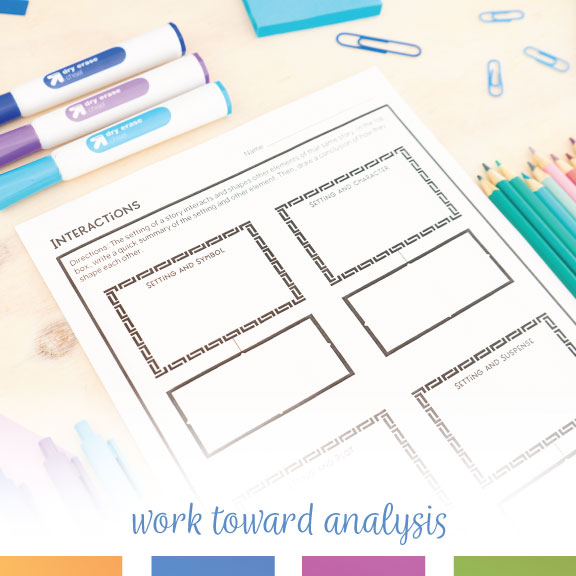Description
These setting graphic organizers will work with a novel or short story. These graphic organizers will engage students and provide ample opportunities for understanding the importance of a story’s setting.
Looking to move students toward literary analysis? These graphic organizers will encourage discussion and clarify concepts while completing literary analysis. Plus, with the variety, you can use different organizers with different stories for years.
You will receive a PDF of these graphic organizers. You will also receive links for a Google Drive version.
Included are 20 activities for teaching setting:
Different types of settings:
1. Dystopian
2. Futuristic
3. Historical
4. Science Fiction
With these, you can show students how a certain genre can require different components with a setting.
Basics:
5. Interactions (setting and symbol, setting and character)
6. What time is it? (studying aspects of a time period)
7. Multiple settings
8. Overview: location and time
9. Setting and colors
10. Research the story’s setting
11. Setting: brainstorming
12. Get a snapshot of the setting!
Setting and other literary devices:
13. When the setting is a flashback
14. Setting: first person point of view
15. Setting: third person point of view
16. Setting and symbols
17. Setting and characters
18. Setting and theme
19. Setting and plot
20. Setting and conflicts
With these, you can show students how the setting influences other parts of the story and vice versa.
You can see an image of most of these in the thumbnails. With the questions and prompts on these, students will move toward literary analysis. You can encourage student choice and provide differentiation with any piece of literature. Often, I use these setting graphic organizers to brainstorm pieces about the setting of a story and then assign a writing prompt based on what students discover.
These graphic organizers were made to teach setting with middle school language arts classes, but they will work with other levels depending on your needs.









